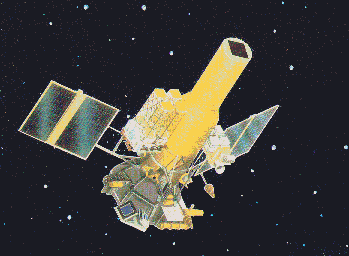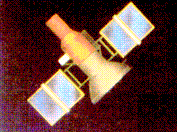GRANAT payload
The GRANAT payload mainly includes two types of instruments :
-
Three narrow field telescopes, SIGMA, ART-P and ART-S, which are to observe point-like sources in the sky in various energy ranges from 3 keV to 1.3 MeV.
-
Several detectors, PHEBUS, KONUS, TOURNESOL and WATCH, which are to observe the entire celestial sphere to detect transient phenomena like gamma bursts.

GRANAT orbit
The five-ton GRANAT satellite was launched from Baïkonour on 1 december 1989 into a highly eccentric orbit, going from 2000 to 200000 km, and inclined 51 degrees.
Its orbital period is four days but the payload is only in service for three days out of each orbit. There is no observation during the fourth day because of the passage of the satellite through the Earth’s radiation belts.
In fact at less than 60000 km, the charged particles trapped in the radiation belts induce a considerable background noise in the detector.






